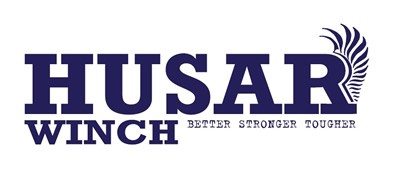
What Rope for a Winch and What You Should Know About It?
Spis Treści
Unfortunately, there is no definitive answer to the question, "which rope is the best." The choice should be determined by our needs and what we expect from the rope in conjunction with the winch. The most popular and frequently used types among our customers are synthetic and steel ropes. They are particularly favored by enthusiasts of extreme off-road driving, as well as tow truck operators and firefighters. Why is this the case, and what should you know? I will explain in this post.
**Synthetic vs. Steel**
In reality, how long the rope will serve us depends on how it is used and maintained. From the very beginning of using the winch, it is essential to take care of the rope, but we will discuss that in the next section. In the case of synthetic rope, we can be sure that it will be much lighter compared to steel rope. Therefore, during rallies, where time is of the essence, adrenaline seekers know that a rope that is easier to unwind and then rewind will be beneficial. It doesn’t tangle or get stuck. Thus, using it will not cause problems and won’t take up precious moments. However, the downside is that synthetic ropes are definitely not as durable as steel ropes. Due to the artificial material from which the synthetic rope is made, it has lower resistance to mechanical damage like abrasions or cuts. It should also be noted that steel rope is completely resistant to high temperatures. Therefore, synthetic ropes are better suited for users who prefer ease of use or situations where time is critical, while steel ropes are most suitable where high resistance to various external factors is required, such as during regular off-road trips or in situations where a car is being towed.
**What About the Rope Supplied with the Winch?**
Such a rope has a strength appropriate for the power of the 12V or 24V winch and its intended use. Here, you don't need to worry about your choice if the winch selection was well thought out. However, before use, it's essential to check its usability and ensure it is not damaged. Why? Because typically the rope, after being unwound for the first time, is not covered by warranty. When it comes time to replace it, you should always choose the same type or a recommended equivalent from the manufacturer.
**Can the Rope Be Repaired?**
The only way to repair the rope is to shorten it above the damaged area and terminate it in such a way that the end is secured with clamps (a thimble).
**Rope Maintenance**
Maintaining the rope is quite simple, so it is worth taking care of it for the sake of cost-effectiveness and extended lifespan. Even when the winch is not in use, the rope still requires regular maintenance. This activity involves checking, after fully unwinding, for any damage to the rope’s coils. Special attention should be paid to the first coils, which may not be visible if the product is not fully unwound. It should also be cleaned of dirt and thoroughly dried. For steel ropes, periodic lubrication with penetrating oil is required.
**Why Should the Rope Be Taut During Winch Operation?**
For the work to proceed correctly, the rope should remain taut during use. This application prevents breaking and tangling of the product. What should you do if tangling occurs? You should immediately stop the winch operation, remembering that the load being pulled should be properly secured. Then, partially unwind the rope and start rewinding it. If this does not help, you should try to loosen the rope and manually straighten it.
**Proper Direction for Rewinding the Rope**
While rewinding the rope, pay attention to its correct direction and uniformity. When pulling a load, the rope begins to work, so it should coil onto the drum from the bottom of the winch, layer by layer. Proper operation will help avoid buildup or tangling, thus protecting the winch from serious damage.

All comments